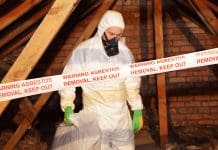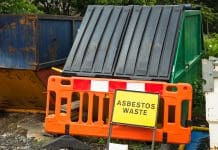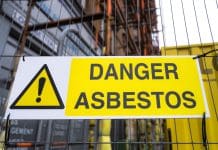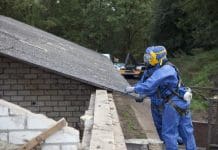High Speed Training has released research detailing how, despite its banning 25 years ago, asbestos remains a large cause of work-related deaths
The results of the research show that many employers do not take asbestos with the weight and seriousness required, often putting workers at risk in asbestos removal.
The study also shows that asbestos can still be attributed to 5,000 deaths per year.
Stricter training is required when dealing with asbestos
Exposure and poor-handling of the material increases exposure to mesothelioma, a cancer that often affects the lungs but can affect other organs as well. There is no cure.
There is also a secondary risk posed to the groups around tradespeople exposed to asbestos, including families and the public.
The study found:
- 26% of tradespeople who have encountered asbestos did not follow removal guidelines, with 26% saying their superiors told them to ignore the safe removal process
- 35% of tradespeople don’t think asbestos is hazardous
- 36% of those who aren’t concerned about asbestos said they view it as a problem of the past
- 46% of tradespeople believe the training they received about asbestos is insufficient
A call for change
High Speed Training is calling upon the Department for Education to make asbestos training a compulsory part of the curriculum in college and apprenticeship-level training.
70% of their survey respondents supported them, who agreed that it should be compulsory. 74% agreed that awareness needs to be raised around the secondary dangers to family and the public.
Dr Richard Anderson, head of learning and development at High Speed Training, said: “Whilst asbestos has been banned in the UK since 1999, it is still present in many buildings in the UK – with some reports3 stating it’s present in 1.5 million – and it can take as long as 30 years or more for symptoms of related diseases to appear, which really indicates the need for better awareness for tradespeople, their families, and the general public.
“Asbestos removal regulations are in place to make sure that the risk of exposure to harmful fibres is limited and it’s imperative that guidelines are followed, by a trained professional. It is never something that you should attempt to do yourself, whether you are a tradesperson or member of the general public. There can be serious risks to your health if asbestos is disturbed and fibres are released into the air.”














